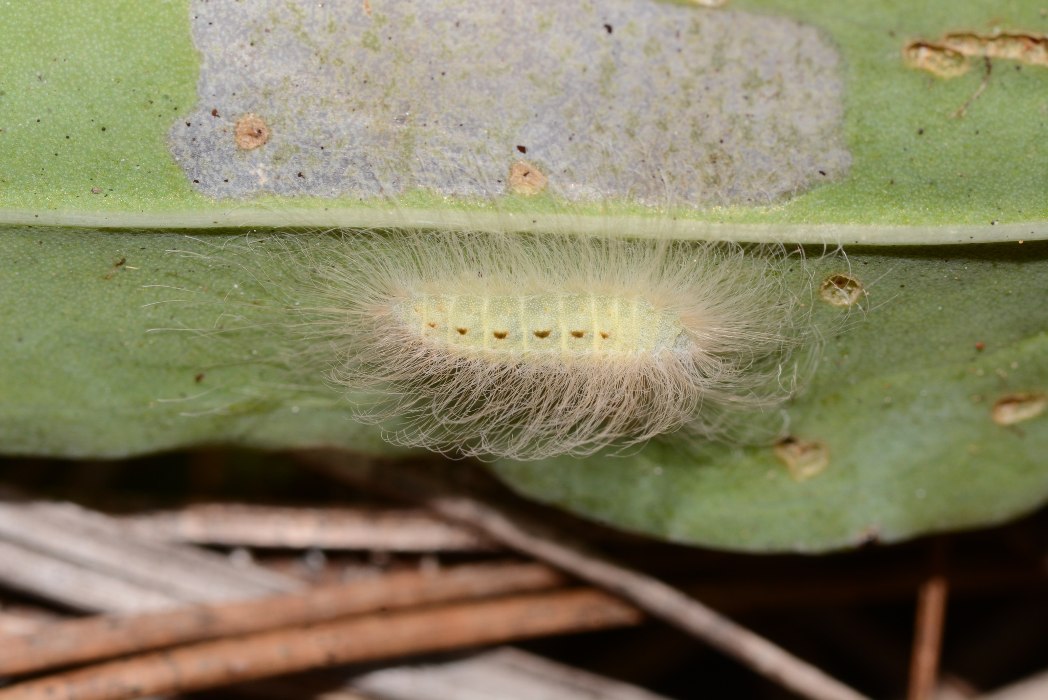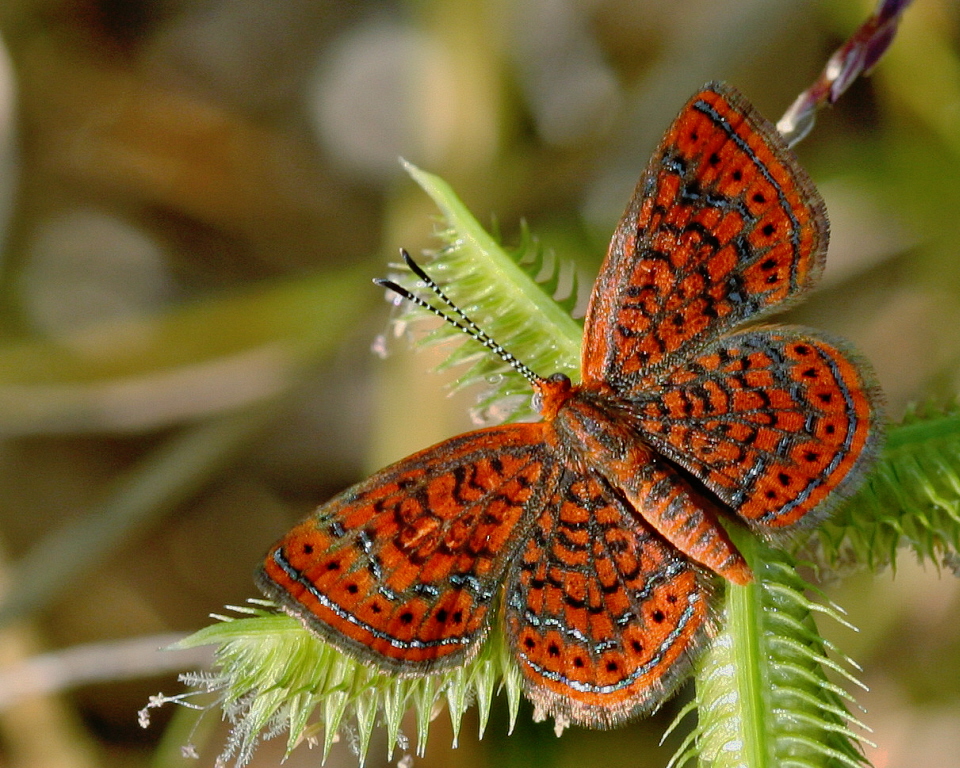Little metalmark
“Know your native pollinators” is a series of articles that will help you identify and appreciate Florida’s varied pollinators, including bees, wasps, butterflies, moths, beetles, flies, birds and bats. Pictured above: Little metalmark (Calephelis virginiensis) by Mary Keim.
True to its name, the Little metalmark is one of the smallest butterflies you can find. When you do see one, the beautiful markings on this butterfly make it worth noticing!
CLASSIFICATION
Class: Insecta
Order: Lepidoptera
Family: Riodinidae
Subfamily: Riodininae
Genus species: Calephelis virginiensis
IDENTIFICATION
The Little metalmark is one of the tiniest butterflies, having a wingspan of only 1.2 – 2.5 cm. It is light brown to rusty orange with dark dots and silver markings on its wings, giving members of this family the common name of “metalmark.” The underside of the butterfly is bright orange. They are low flying and often hang upside down when resting.
FORAGING PREFERENCES
The Little metalmark nectars on short-flowered composites (Asters) including Common yarrow(Achillea millefolium), Lanceleaf tickseed (Coreopsis lanceolata), Common sneezeweed (Helenium autumnale) and Mistflower (Conoclinium coelestinum).
Host plants are also in the Asteraceae family, and include Purple thistle (Cirsium horridulum), Vanillaleaf (Carphephorus odoratissimus) and Climbing hempvine (Mikania scandens).
HABITAT
This butterfly is found throughout the southeastern coastal plain, which stretches from eastern Texas northeast to Virginia. All of Florida is included in the Little metalmark’s range except for the Keys. These butterflies are found in marginal wetlands, saltmarsh meadows, sandhills, pine savannas, prairies, flatwoods and roadsides.

LIFE CYCLE
Eggs are flattened and reddish-brown with white ridges. Caterpillars are light green with long, plume-like white setae (hairs). They have corresponding brown spots on six of their abdominal segments on each side. The pupae are green with lateral rows and a dorsal row of black spots. Pupae remain covered in the setae, which are thought to protect against predators as a camouflage since the setae hairs resemble the long white hairs found on one of the caterpillar’s favorite host plants, Purple thistle. Caterpillars are present in Florida March through November with up to five broods. Adults are most often seen in flight during late summer and fall.
References:
- Butterflies at Home. “Metalmark Butterflies.” Epagentry Design Studios, LLC. Copyright 2022.
- Florida Museum. “Little Metalmark.” Florida’s Wildflower and Butterflies. Page Last Updated: 12/09/2021. Copyright 2022.
- Hall, D., Minno, M., Butler, J. “common name: little metalmark scientific name: Calephelis virginiensis (Guérin- Ménéville) (Insecta: Lepidoptera: Riodinidae).” University of Florida. Publication Number: EENY-407. Publication Date: May 2007. Latest Revision: December 2016. Reviewed: October 2019.
- Lotts, Kelly and Thomas Naberhaus, coordinators. “Little Metalmark Calephelis virginiensis (Guérin-Méneville, [1832]).” 2021. Butterflies and Moths of North America. http://www.butterfliesandmoths.org/ (Version 08222022).

